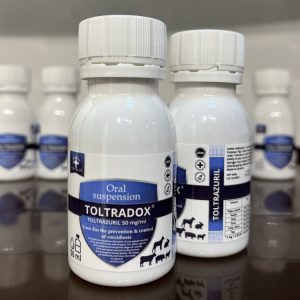Toltrazuril is a potent antiprotozoal medication commonly used to treat coccidiosis, a parasitic infection caused by protozoa of the Coccidia species in dogs. As with any medication, pet owners may notice changes in their dog’s poop after administering toltrazuril. Understanding these fecal changes is essential to ensure that the treatment is effective and to alleviate any concerns that may arise.
Normal Fecal Changes
After receiving toltrazuril, it is not uncommon for dogs to experience some temporary changes in their poop. These changes are typically mild and transient, and they are often part of the body’s natural response to the medication and the elimination of coccidia parasites.
Softening of Stool
One of the common changes that may be observed is a softening of the stool. Toltrazuril works by disrupting the development and reproduction of coccidia parasites, leading to their elimination from the dog’s gastrointestinal tract. During this process, the intestines may temporarily be affected, resulting in softer stools.
Changes in Color
In some cases, the color of the dog’s poop may change slightly after toltrazuril treatment. The stool may appear slightly darker or lighter than usual. These color changes are generally not a cause for concern, as they are often temporary and will resolve on their own.
Mucus in Stool
Pet owners may notice an increase in mucus in the dog’s stool after toltrazuril treatment. This mucus is a normal response to the gastrointestinal changes that occur during the elimination of coccidia parasites. In most cases, the presence of mucus in the stool should decrease as the dog’s gastrointestinal system returns to normal.
Diarrhea or Loose Stool
While toltrazuril is generally well-tolerated by dogs, some individuals may experience mild gastrointestinal upset, such as diarrhea or loose stool. This can be a temporary side effect of the medication, and it usually resolves on its own without intervention. If diarrhea persists or becomes severe, pet owners should consult their veterinarian.
Monitoring and Hydration
During and after toltrazuril treatment, it is crucial to monitor the dog’s fecal changes and overall well-being. Ensuring that the dog stays hydrated is essential, especially if there are any signs of diarrhea. Encouraging the dog to drink water and providing access to clean, fresh water at all times can help prevent dehydration.
Follow-Up Fecal Examinations
After completing the toltrazuril treatment, the veterinarian may recommend follow-up fecal examinations to confirm the elimination of coccidia parasites. These examinations help assess the effectiveness of the treatment and ensure that the infection has been successfully resolved.
Consulting the Veterinarian
If pet owners have any concerns or questions about their dog’s fecal changes after toltrazuril treatment, it is essential to consult the veterinarian. Veterinary professionals can provide valuable guidance and address any issues or uncertainties related to the medication and its effects.
Conclusion
Toltrazuril has proven to be an invaluable asset in the treatment of Cystoisosporiasis in dogs. Its unique mechanism of action, coupled with broad-spectrum efficacy, makes it a potent antiprotozoal medication. As a single-dose treatment, toltrazuril offers convenience and ease of administration, benefiting both veterinarians and pet owners. By understanding the role of toltrazuril in Cystoisosporiasis treatment, veterinarians can make informed decisions about its use, leading to successful eradication of the parasites and improved outcomes for our canine companions.





